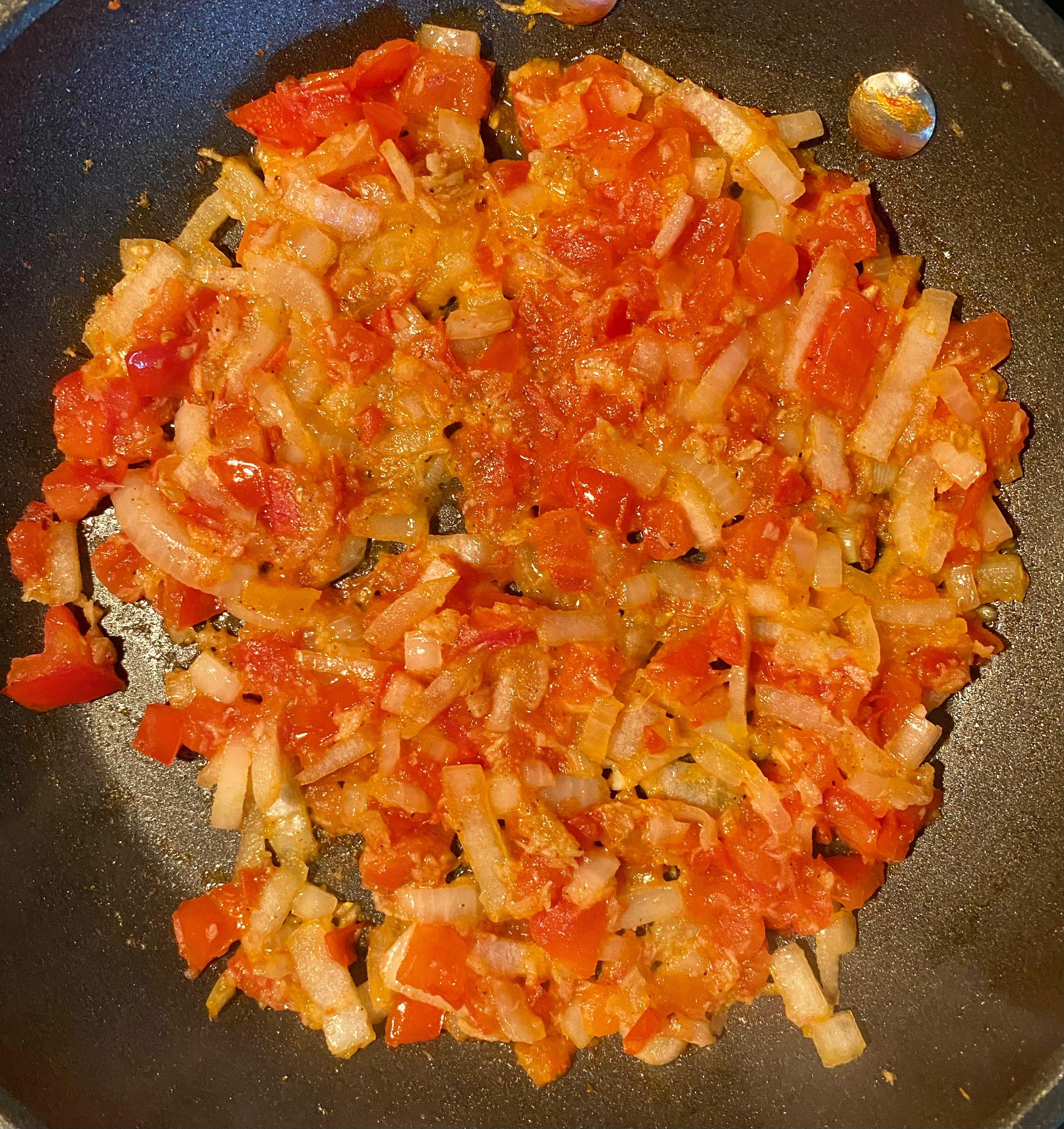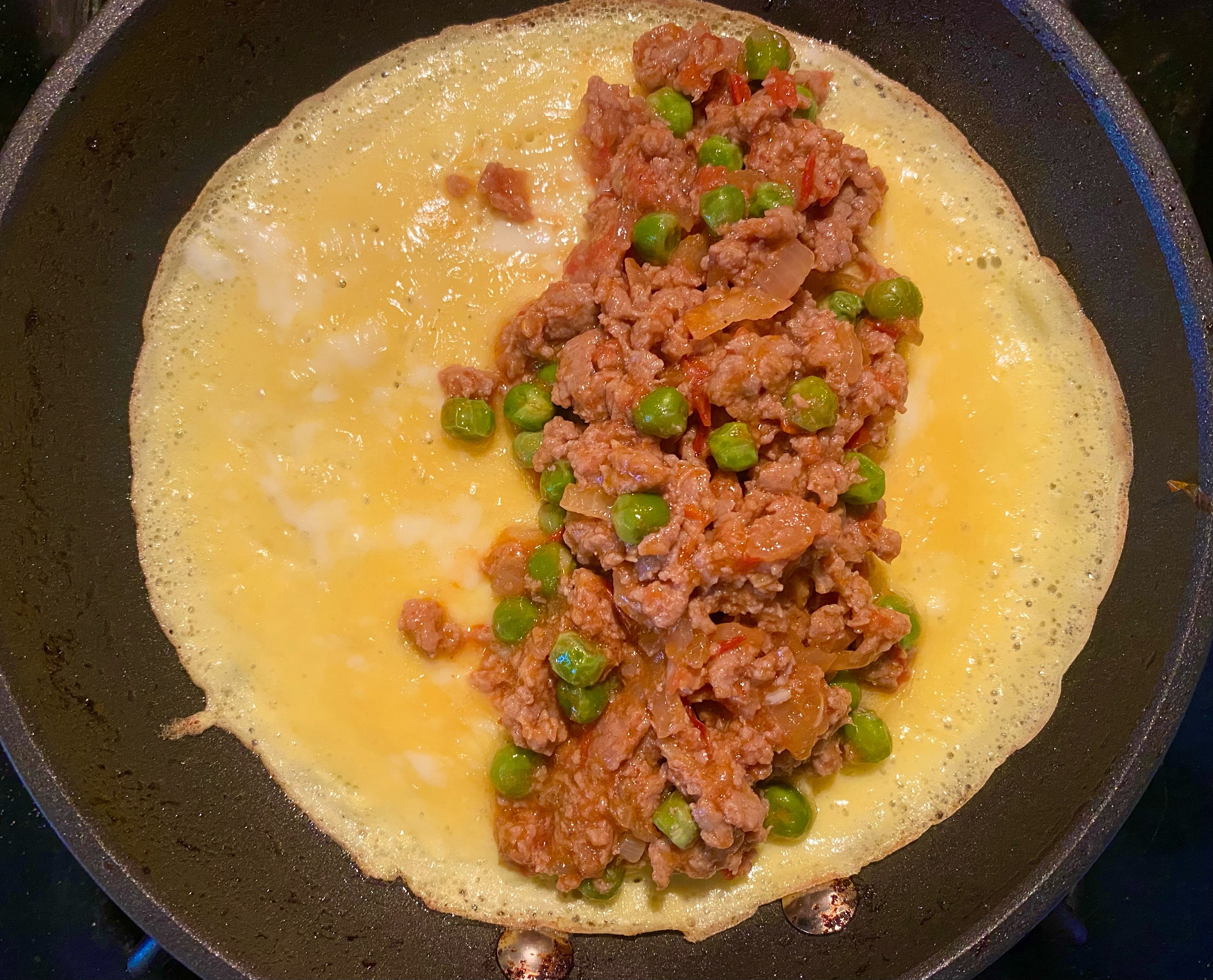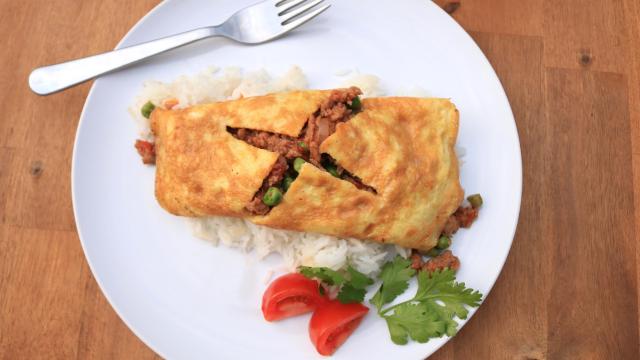There are some childhood dinners that stand out in your memory, permanently crystallised as “the tastiest food that can turn a hot-mess-day into an OK day.” I guess that’s what comfort food is, huh? For me, it’s Kai Yad Sai over jasmine rice. This Thai dish has all the features of an exceptionally satisfying meal, and it’s just adaptable enough to make everyone at your dinner table happy.
Kai Yad Sai translates to English to mean “stuffed egg.” If you’re not familiar with it already, you can imagine something like an omelette pouch that’s filled with flavorful ground meat. The egg functions as a thin, edible wrapper, and as you break it open to get the filling you get a little bit of egg in every bite. The omelette is commonly shaped like a square or rectangle around the ground meat, but my mum used to simply roll it up into a filled cylinder, so you could see the filling sticking out of both ends, and that’s how I do it. Kai Yad Sai is usually filled with ground pork, but that can be swapped out for any ground meat, or even crumbled tofu or seitan. It can be eaten for lunch or dinner, with or without jasmine rice. I can’t help but opt for rice and a proper umami punch of Golden Mountain Sauce (or, if you can’t find that, Maggi is next in line).
Kai Yad Sai, like all good dishes, starts with aromatics. If you have a mortar and pestle, big or small, you can pound the garlic, cilantro root, and pepper in there. If you don’t, then you can use a knife and mow it down into a paste or as fine a mince as possible. These flavours and aromas are meant to distribute through the entire filling, but the pieces effectively “disappear,” so you want the cuts to be small. The paste goes in a hot skillet with about a teaspoon of neutral oil and you fry it up, gently, until it smells great. Add diced tomatoes and onion with a sprinkle of salt to help the ingredients release water and cook down. To prepare the ground pork (or turkey, chicken, beef or tofu crumbles), add soy sauce and an ⅛ teaspoon of baking soda to aid with browning and to prevent the meat from drying out. Once the mixture in the pan has softened and cooked down, add the ground meat. Break up the meat with a wooden spoon and add chopped long beans. You can substitute chopped green beans if that’s more readily available to you (my family has been known to use peas from time to time). Once the meat has browned up, season the mixture with a sprinkle of sugar, oyster sauce and fish sauce. Take the meat filling off the heat and taste it. If you’d like to balance the flavour with some acid, add a squeeze of lime juice. Set this aside while you prepare the egg.
To make the “kai” portion, you need less egg than you’d use for a breakfast style omelette since you’ll be cooking it into a very thin layer. For two servings, I’ll use a total of three eggs. Scramble the eggs in a measuring cup and thin the mixture with a splash of water, about a teaspoon. This amount of water is enough to help loosen the eggs so they can spread thinly in the pan, but small enough so it will evaporate during cooking without making the omelet watery.
Add half a teaspoon of neutral vegetable oil to a nonstick frying pan over medium low heat. Pour half of the scrambled egg into the pan. Tilt the pan as it cooks to increase the circumference of the egg disk. After a minute or two, the egg should be set all the way through, just wrinkling on the surface if you lift an edge. The egg will be flexible, the bottom will have some lightly browned spots but should not be dark or rigid. (If this happens, that means your heat is too high, so cook the next one on lower heat.) Take the pan off the heat and fill the omelette with half of the meat filling. If you’re doing a square shape, add the filling to the centre and fold each “side” of the egg circle over the centre so it makes a square pouch. Put the serving plate over the pan and flip it over onto the plate, seam-side down. If you’re doing a cylinder, pour the filling in the middle as a line, and fold one side over it, then the next. Gently roll it onto the serving plate. Repeat for the other serving.
The finished dish can be served as is, in all its protein-packed, low-carb glory, or along with a steaming mound of rice. Either way, you’ll love it for the balance of umami, acidity, sweetness, and bold, herbaceous notes. Sprinkle chopped Thai chillis on top if you’re a heat-seeker. The following recipe has been modified from Hot Thai Kitchen’s recipe.
Kai Yad Sai (Thai stuffed egg)
Ingredients:
- 3 cloves of garlic
- 1 cilantro root (or one full cilantro stalk)
- ½ teaspoon of white pepper (use whole peppercorns if grinding)
- 170 g ground pork (or any ground meat)
- 1 tablespoon of soy sauce
- ⅛ teaspoon baking soda
- 2 teaspoons vegetable oil (divided)
- ¼ white onion (chopped)
- ⅓ cup tomatoes (deseeded and chopped)
- ½ teaspoon salt
- 3 tablespoons chopped long beans (substitute green beans or peas)
- ½ teaspoon sugar
- 1 tablespoon oyster sauce
- 1 ½ teaspoons fish sauce.
- Splash of lime juice
- 3 eggs
Pound the cilantro root, garlic, and peppercorns into a paste with a mortar and pestle. (Alternatively, mince them into a paste and use pre-ground peppercorns.) In a small bowl, mix the ground pork with soy sauce and sprinkle the baking soda over the top. Toss and stir until everything is evenly incorporated.

Add one teaspoon of oil to a frying pan. Over medium low heat, fry up the garlic paste until aromatic. Add the chopped tomato and onion with the salt. Allow this to cook for a few minutes until everything softens and breaks down. Add the meat and turn the heat up to medium. Stir and break it up as it cooks. When the meat is mostly browned, add the beans, sprinkle the sugar over the top along with the oyster sauce and fish sauce. Stir for another minute to incorporate and take the meat off the heat. Add a spritz of lime juice. Set aside.

In a measuring cup, scramble the eggs with a teaspoon of water. Add a half teaspoon of oil to a frying pan and flick it onto medium low heat. Pour half of the scrambled eggs into the pan. Tilt and rotate the pan as the egg cooks to increase the size of the circle and keep it thin. After a minute or so the egg should be set all the way through.

Turn off the heat and mound up half of the meat filling into the egg. Fold the egg over the meat as a square pocket or roll it into a tube. Serve alone or with fresh jasmine rice and chopped hot chilli peppers. Repeat with the other half of the egg and filling mixture. Eat immediately, or pack it up as an office lunch for the next day. Eat it cold, room temperature, or reheat it in the microwave in a loosely covered container for about 45 seconds, just to take the chill off.

Leave a Reply
You must be logged in to post a comment.